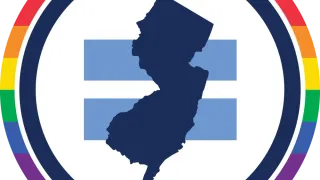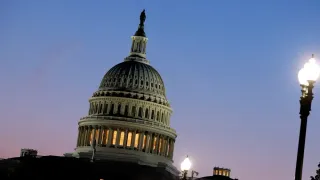November 7, 2015
San Francisco Pride Shooting Case Heads to Trial
Seth Hemmelgarn READ TIME: 4 MIN.
Organizers of San Francisco's LGBT Pride celebration, who are being sued by a gay man who was shot at the 2013 festival, are headed to trial after last-minute settlement talks collapsed Tuesday.
Trevor Gardner, 25, of Los Angeles, filed his lawsuit in 2014 claiming that lax security was to blame for the incident, in which he was shot in the leg.
Much of the trial, which is expected to start next week and which Gardner's attorney has estimated will take five weeks, is set to involve exactly what San Francisco LGBT Pride Celebration Committee officials could realistically do to boost security, according to court documents. Discussion will likely include metal detectors, which SF Pride doesn't currently employ.
In an October 1 declaration, Forrest Franklin, who SF Pride has looked to as a security expert in the case, pointed to differences between the San Francisco and Los Angeles Pride festivals and sought to explain why certain security measures would be impractical here.
At the Los Angeles party, attendees "allegedly" have to go through metal detectors, he said.
San Francisco's Pride is "many times larger than any other similar event, including the Los Angeles Pride event," Franklin said, and it's "held within a large footprint of the city, covering many city blocks," while the Los Angeles festival "is held within a single site."
The San Francisco celebration footprint "encompasses numerous privately-owned properties, including commercial properties, parking garages, long-term hotels, and other properties in which individuals would likely to be present irrespective of the occurrences of any San Francisco Pride event."
In documents filed Tuesday, Maria Caruana, Pride's attorney, made similar comments.
During the discovery process, where opposing attorneys share information with each other, Gardner has brought up witnesses related to Los Angeles' Pride event, "which is fundamentally different" from San Francisco's festival, Caruana said.
Among other issues, LA Pride "occurs inside an enclosed park," while San Francisco's celebration "includes a parade and occurs in a 7 x 4 city block area."
The Los Angeles event has at most drawn 90,000 people in recent years, while at least 500,000 come to San Francisco's Pride, Caruana said, citing a witness deposition.
Franklin talked more about metal detectors in his declaration.
"Metal detectors and similar perimeter security measures are no guarantee against the presence of weapons," he said.
"In addition," Franklin said, "simple math extrapolation supports the premise that screening the hundreds of thousands of persons expected under the permit language would require several nonstop 24-hour days to process, assuming all gates were equipped [and] staffed ... ."
He also said the shooting, in which no arrests have been reported, "is consistent with gang violence," and those "incidents are extremely difficult to control."
Gardner alleges that after the shooting "he was left to bleed out," Franklin said, but based on his review, he said police "were on the scene within three minutes of the shooting. In fact, the first responder to the scene was then-San Francisco Police Deputy Chief John Loftus. ... That one of the first responders was one of the highest ranking police personnel in the city is likewise an indication of the extent of the police presence" at the event.
Franklin also noted in his declaration that Gardner was shot at 6:35 p.m., minutes after the event had officially ended.
SF Pride "would not reasonably deploy crowd control measures to keep persons out of an event that had concluded," he said.
In July, SF Pride filed a motion for summary judgment asking for the case to be decided without going to trial.
But in an order signed in October, Superior Court Judge Ernest H. Goldsmith firmly denied SF Pride's request, and suggested the organization should require metal detectors and check people's bags, among other measures.
"The causal link between defendant's security failures and plaintiff's injury is robust," Goldsmith wrote.
Gardner is expected to testify in the trial, as are SF Pride and police officials, witnesses to the shooting, Gardner's doctors, and security experts.
Caruana has also sought to get police Chief Greg Suhr to testify in the case, according to the court documents, but the city has rebuffed that effort.
Testy Emails
The records also show that there have been some testy email exchanges between attorneys in the case.
In an October 26 message, Ryan Lapine, Gardner's attorney, said someone in Caruana's office had "made grossly unprofessional ad hominem attacks on me."
Caruana responded, "This ongoing discussion" about the staffer "is without merit and a typical waste of my time from your office. ... Please stop writing me about insignificant issues. Stated another way: Cease and desist with this drama."
In his next email, Lapine said, "Please adopt a professional tone in your written communications. Your statement ... does not comport with the requirements of civility imposed on all officers of the court."
The trial almost started Tuesday, when presiding Superior Court Judge John K. Stewart assigned the case to Superior Court Judge Angela Bradstreet, a lesbian. But Lapine objected to Bradstreet overseeing the case, saying his team didn't believe it could have "a fair trial due to prejudice" under her.
Outside the courtroom, Lapine declined to comment on why exactly he didn't want Bradstreet to oversee the case.
Stewart is expected to assign a judge Monday.
Lapine and Caruana both said they couldn't comment on what the main obstacle to settling the case had been. Settlement talks are confidential.
Gardner, who was accompanied in court by his parents, declined to comment on the case. SF Pride Executive Director George Ridgely, who was also in court, declined to comment, as well.
Eric Ryan, who was also shot in the 2013 incident at Pride, has also filed a lawsuit against SF Pride.
In his 2014 complaint, Gardner said he was seeking "not less than $10 million."






